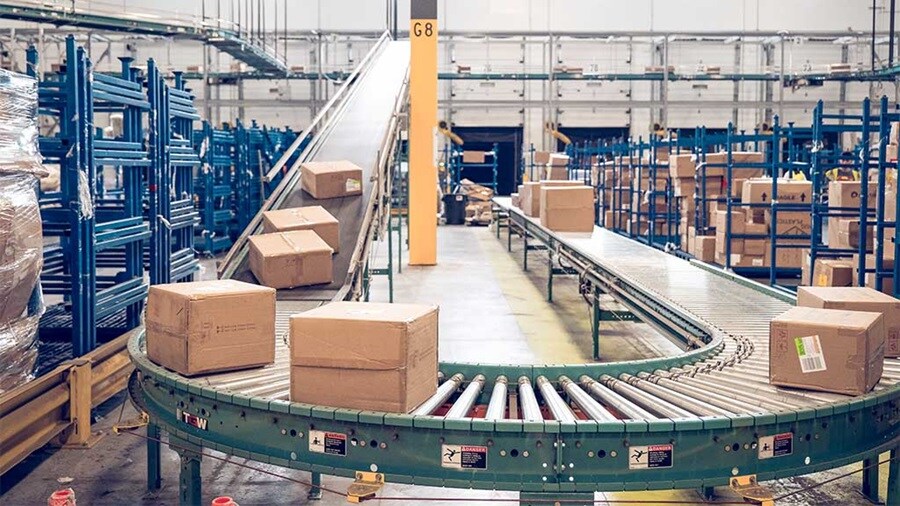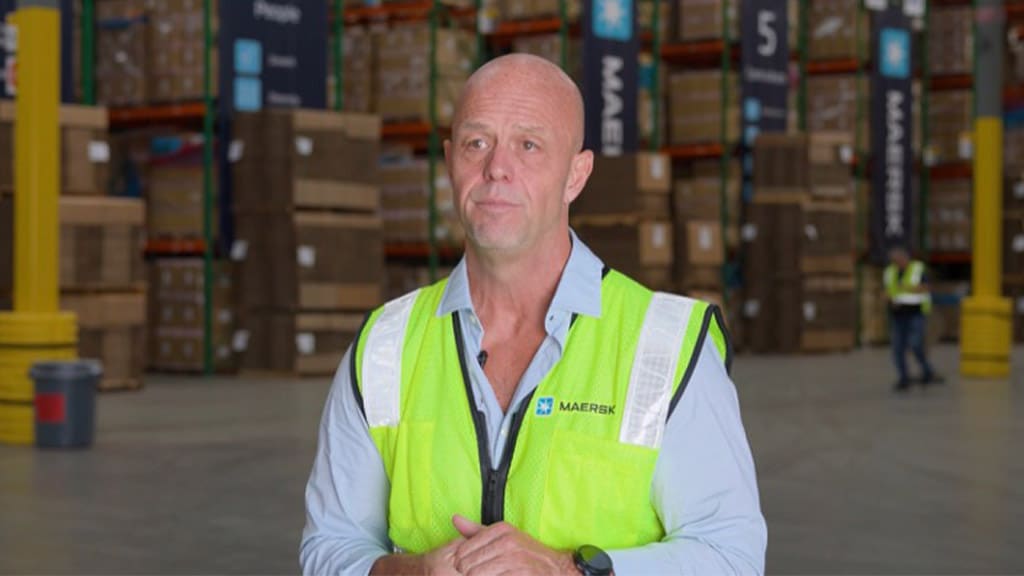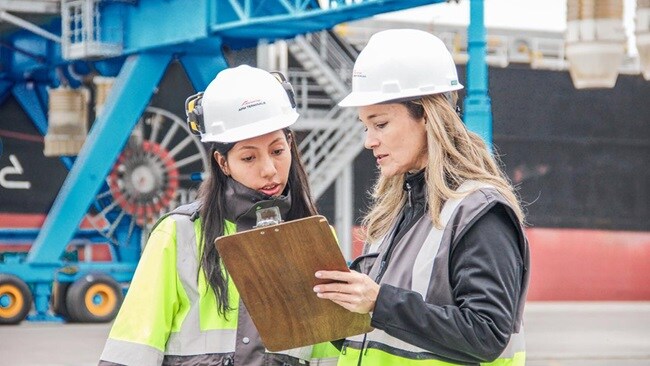As U.S. warehouse vacancy rates hit an 11-year high of 7.1%, companies are pausing leasing decisions amid tariff uncertainty and oversupply. While third-party logistics (3PLs) remain a go-to for risk reduction, a quieter shift is underway: strategic insourcing, a model that blends insourced control with outsourced scalability.
What to look for in a warehousing partner
Picture this: a mid-sized electronics brand operating under a strategic insourcing warehousing model. When tariffs shifted in early 2025, their supply chain strategy was no longer viable. Instead of waiting it out like many competitors, they pivoted fast. They reallocated inventory and quickly secured a new warehouse to support a more flexible delivery model.
But here’s the key: they wanted control over the lease, equipment, and systems, while relying on a partner to manage the facility, leadership, and staff. That kind of agility doesn’t happen without the right partner.
What should you look for in a strategic warehousing partner?
- Multi-regional network
Warehouses are positioned in key ports and market demand centres close to customers for faster delivery. - End-to-end integration
Ocean, inland, customs, and warehousing from a single provider, simplifying the company’s supply chain and streamlining accountability. - Automation and innovation
Tools like AI-driven inventory management, predictive analytics, and the ability to leverage robotics to absorb volume swings. - Industry-specific solutions
Partners who understand your market, whether it’s retail, tech, FMCG, or lifestyle, and can act as an extension of your brand.
Warehousing at a crossroads
The U.S. warehousing sector has entered a pivotal moment. With over 45 million square feet of speculative space hitting the market without tenants, and tariff-driven inventory swings adding pressure, many retailers and manufacturers are hitting pause on long-term leasing and build commitments.
But where some see risk, others see opportunity. Third-party logistics providers are stepping up in a big way, now responsible for 38.3% of industrial leasing, a sharp rise from 25.2% in 2020. This shift isn’t just a reaction to the market; it’s a strategic pivot.
Companies are increasingly outsourcing warehousing to stay nimble, reduce exposure, and better manage the complexities of inventory planning in a world of shifting trade policies. Flexibility is proving to be the foundation of resilience. As the landscape evolves, so too must the approach to space, strategy, and supply chain partnerships.
Where strategy meets stress test

Peak season isn’t just busy; it’s the ultimate pressure test for your warehousing strategy. When demand spikes and fulfillment windows shrink, traditional models often buckle under the weight of inflexibility. That’s where strategic insourcing quietly proves its worth.
Hybrid setups give brands the ability to scale operations on demand, without locking into long-term leases or overcommitting capital. They also unlock tailored services like kitting, labelling, and returns processing that are critical for seasonal SKUs. When inventory needs to move fast, strategic insourcing models allow for rapid reallocation, keeping supply chains agile when it matters most.
Is it outsourcing if you’re in control?
The line between insourcing and outsourcing is starting to blur, as more companies explore flexible models that combine elements of both. Whether it’s operating within a partner’s facility while retaining autonomy or bringing in a logistics provider’s team to run your own space, the goal is the same: stay agile.
These setups allow brands to scale operations up or down based on demand, integrate real-time systems for full visibility, and customise workflows to fit their products, not a one-size-fits-all 3PL model. Especially in volatile markets, this kind of adaptability is a strategic advantage. You avoid the capital burden of new builds, sidestep margin stacking – where layered costs accumulate across providers, and gain the ability to pivot quickly when tariffs shift or demand spikes. It’s not just about outsourcing anymore; it’s about designing a resilient, responsive supply chain that works for your business.
Rethinking control
As warehousing strategies evolve, more brands are quietly rethinking what control and flexibility mean. In a climate shaped by tariff shifts, seasonal surges, and rising customer expectations, the ability to adapt quickly, without overcommitting, is becoming a strategic advantage. It’s not about outsourcing less. It’s about partnering smarter.
Be ready for your warehousing strategy to go all the way! Discover more with Maersk Logistics Insights, and explore how hybrid warehousing models are redefining flexibility. For more logistics trends and insights, read and download The Logistics Trend Map.
About the experts
The perspectives in this article come directly from Maersk’s Contract Logistics leadership, who are driving innovation and resilience in today’s warehousing landscape:
Jason Walker leads Maersk’s Contract Logistics across North America, overseeing all aspects of warehouse and cold chain operations, including engineering, technology, customer operations, platform and implementation, product strategy, and solutions design.
With over 35 years of industry experience, Jason brings deep expertise in integrated logistics and transportation, spanning omni-channel fulfillment, e-commerce, transloading, and cold storage. He holds a Master of Science in Global Supply Chain Management from USC Marshall School of Business and has completed advanced studies in Operations Management at the University of La Verne.
Dave Hune serves as Head of Maersk Contract Logistics Operations for North America, overseeing all warehouse services, including omni-channel fulfillment, transloading, and cold storage, across a network of over 80 facilities totaling 25.5 million square feet.
With 33 years of experience in operations, Dave has held various senior leadership positions across North America, demonstrating his expertise in overseeing fulfillment, transloading, and transportation services. Holding a double major in Business Administration and Math from Whittier College, along with a Master of Business Administration from the University of La Verne.
How can you be ready for anything?
Instability is on the rise, causing logistics to feel the pressure of the constant disruptions. Is your business resilient enough? Do you know what it takes to build resilient supply chains in today's world?
Learn how Maersk can help with logistics resilience.
미래 산업 트렌드에 관한 최신 정보를 원하십니까?
구독 신청을 완료하셨습니다. 환영합니디!
We're sorry, but there was a problem sending your contact request.
Please review the form fields and ensure all required information is provided correctly. If the issue persists, please contact our support team for further assistance.
미래 산업 트렌드에 관한 최신 정보를 원하십니까?
이 양식을 입력하여 구독을 신청하시면 통합 물류에 관한 Maersk의 인사이트를 메일로 받아보실 수 있습니다. 맞춤형 기사를 통해 유용한 정보와 비즈니스 인사이트를 확인해 보세요. 언제든지 구독을 취소할 수 있습니다.
I agree to receive logistics related news and marketing updates by email, phone, messaging services (e.g. WhatsApp) and other digital platforms, including but not limited to social media (e.g., LinkedIn) from A. P. Moller-Maersk and its affiliated companies (see latest company overview). I understand that I can opt out of such Maersk communications at any time by clicking the unsubscribe link. To see how we use your personal data, please read our Privacy Notification.
By completing this form, you confirm that you agree to the use of your personal data by Maersk as described in our Privacy Notification.













